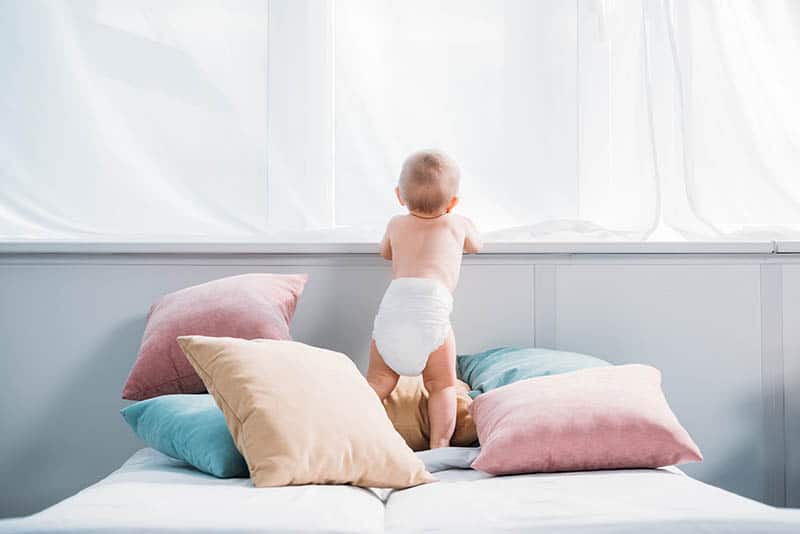So many people warn us about the number of diapers a baby goes through in a year and that buying in bulk is the best option.
But when you do that with any item you tend to worry about the expiration date. So, the question here is – do diapers expire?
The answer to this question is a simple “no”, not really.
They’ll lose some of their effectiveness at best, but outside of that, they are still more than capable of being used at any point in time.
It’s not like they’ll disintegrate or anything.
Now, just because that’s a no on their shelf life, it doesn’t mean that you can keep them around forever.
Most baby diaper companies suggest using their products within two years of purchase.
While it isn’t a question that comes up often, baby diapers are the one product about which parents don’t have to worry about whether their money was well-spent or not.
They tend to make for a great item to donate to others who need them once your child is done using them.
They’re nothing like baby wipes or baby formula. The former loses the moisture necessary to keep them useful while the latter is food, and food goes bad.
RELATED: Do Baby Wipes Expire? Here’s Everything You Need To Know
No, diapers are a bit more complex and long-lasting, regardless of whether they’re the mass-produced, chemically-laden ones you see on store shelves regularly, or the organic disposable diapers or bamboo diapers you order from Amazon or other online stores.
That said, some features do tend to lose their quality on diapers, which might sway your mind and persuade you to buy a fresh new bag of them regardless.
Let’s see what they are.
The Parts Of A Diaper And Their Problems
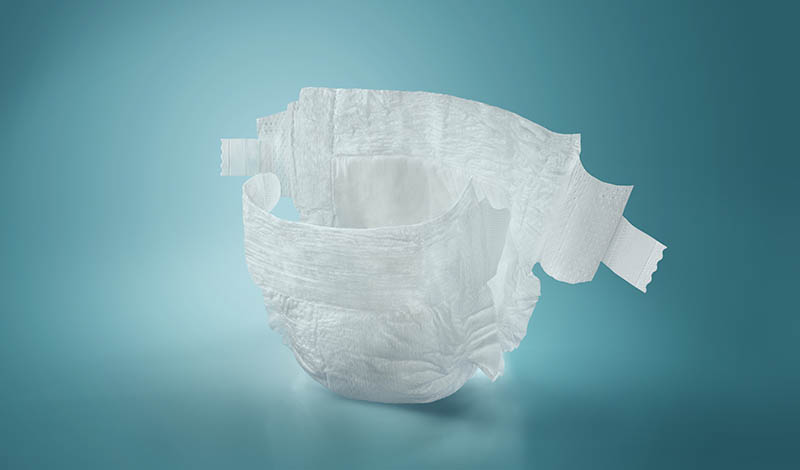
Instead of asking yourself if diapers have expiration dates or not, you should consider the individual pieces themselves rather than the whole diaper.
Each of them is susceptible to some form of deterioration over a certain amount of time.
The inner layer
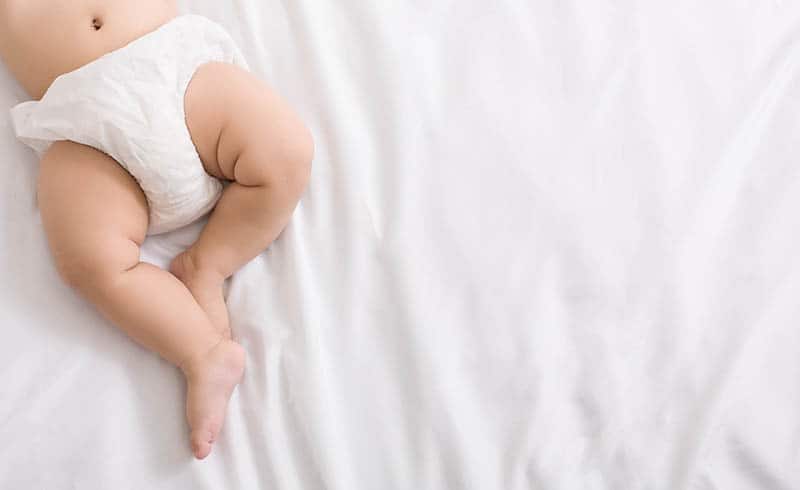
This is the part of the diaper that carries its core purpose – to use its incredibly absorbent properties to retain the baby’s urine and other liquids.
This is all thanks to a super absorbent polymer called sodium polyacrylate that turns into a sort of gel once it comes into contact with any liquid, pooling it all within itself and holding up to its weight in capacity.
This is also the layer where diaper companies sometimes introduce fragrances, claiming they’re more efficient at dealing with messes.
But, if you’re planning to hold onto unused diapers for an extended period of time, you might want to reconsider getting scented ones.
The potential problem with the inner layer
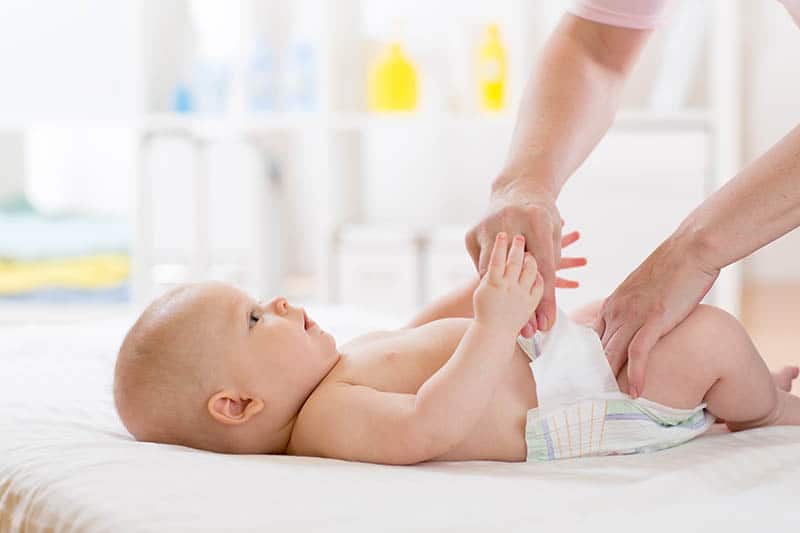
This layer has two potential things that can cause either a loss of diaper potency or can simply make it a bit more uncomfortable.
For you see, diapers with a super absorbent polymer like sodium polyacrylate are a double-edged sword because they’ll also start absorbing moisture from the air over time.
This means that they’ll have less capacity to contain your little one’s messes and there’ll be a higher risk of blowouts occurring.
The other, avoidable issue is one that only applies to scented diapers.
Over the course of a year or so, the fragrances coating the inner layer will start to shift in their chemical composition as they degrade, either becoming weaker or changing their smell to something that can end up being rather pungent.
Make sure to store them properly, especially if you’ve already broken the seal on the bag, so you don’t ruin their absorbency too early.
The outer layer
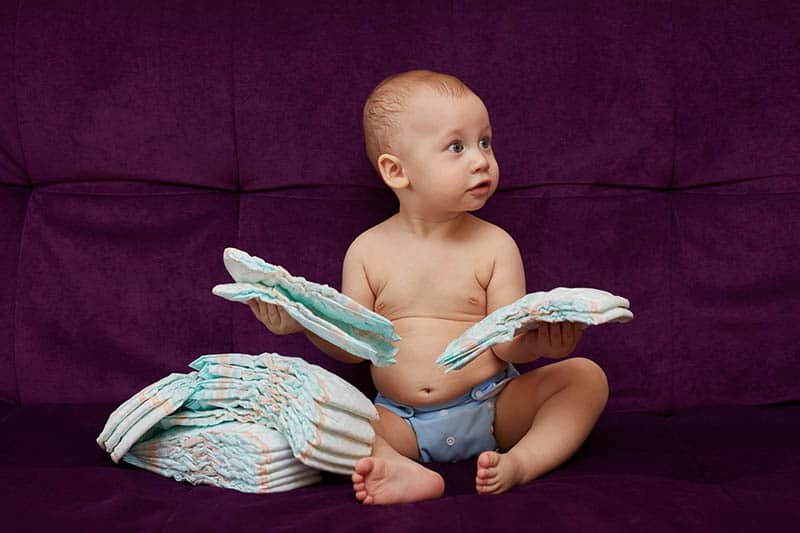
Next up is the outer layer of the diaper.
This is what catches our attention in the first place, whether it be the simple design or the unique and vibrant prints that draw us and our babies in with the variety of color used.
The main function of the outer layer is to protect the inner layer and to offer an extra layer of leak resistance as well as provide a bit of ventilation to your baby’s crotch area.
Depending on the type of disposable diaper you’re purchasing, the layer may be either a mix of paper and plastic, or just made out of pure paper
The potential problem with the outer layer
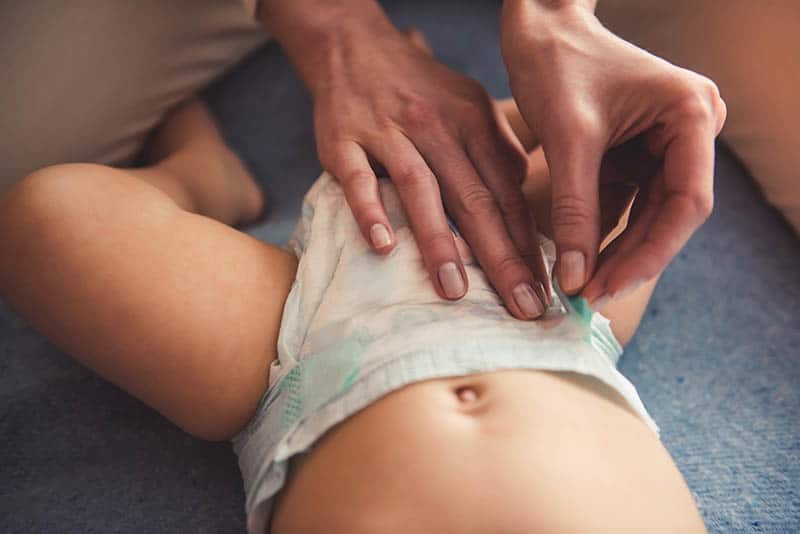
Out of all the potential signs of deterioration that you may face when going through the “Do diapers expire” conundrum, the outer layer is the least prone to having any adverse effect.
That’s because there’s nothing much to lose due to it being mostly a paper product.
If stored properly, the worst thing that can happen to the outer layer is a bit of discoloration, a normal occurrence with any sort of paper when left out to oxidize for a time.
It’s the same effect you see on old book pages after they’ve spent an extended amount of time out in the open.
And, if your diapers had those fancy prints on them, chances are that over time, those same prints will start fading and lose that vibrant color they once had.
But again, this doesn’t affect the diaper whatsoever.
It makes it look a bit more unappealing than any of the other effects, sure, but the diaper itself is still fully functional if only the outer layer was compromised.
The elastic waistband and leg hole fasteners
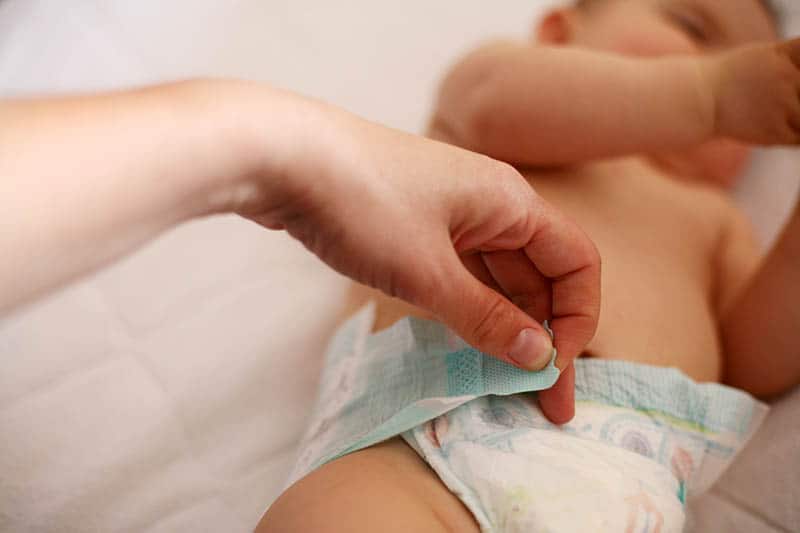
These elastic bits are necessary for keeping your baby in a diaper that’s not too loose or too tight.
They ensure that your baby is as comfortable as they can be in a pair of new diapers and that your baby’s skin isn’t irritated.
They also help protect against blowouts and keep any poop in and away from your furniture or running down the baby’s leg.
Rubber used to be the go-to material for these areas, but it ended up being too tight or it would chafe.
Nowadays, most popular brands, organic or otherwise, use some form of spandex blend for their waistband material.
This isn’t just to keep your baby’s skin safer, it’s also a lot more durable than rubber.
That’s because rubbery materials deteriorate quite quickly when stress is applied to them, or if they’re exposed to air they dry out and lose their elasticity.
The potential problem with the elastic bits
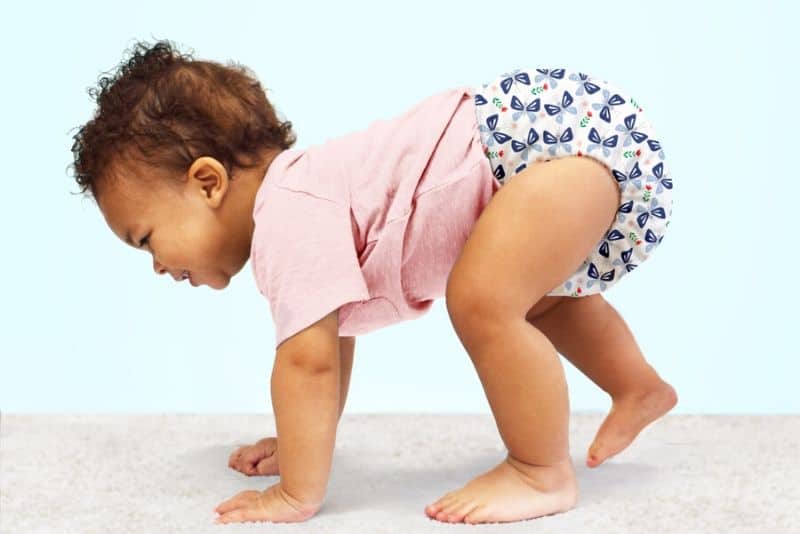
The most obvious issue that’s bound to come up with old diapers is the loss of elasticity, leaving the diaper a rather loose fit around the baby’s small form.
This not only leaves them uncomfortable but increases the risk of any potential blowouts happening when the diapers come loose and release their smelly contents, making your floor a potential disaster area.
These are definitely some of the higher risk areas when it comes to diaper age, and the older diapers get, the worse it becomes despite still being flagged as usable.
Adhesive strips and fastener tabs
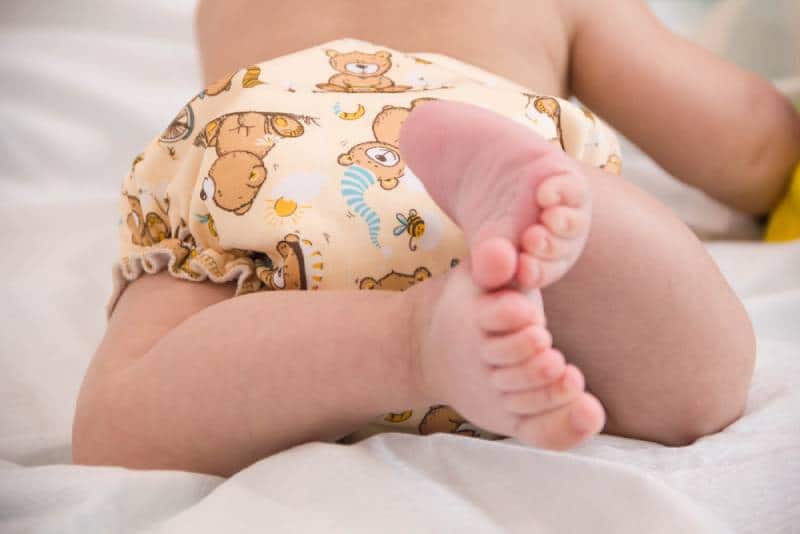
And the final aspect of a baby diaper is the fasteners on the side that help fine-tune the adjustment of the diaper to fit the baby dynamically based on their level of growth.
Older diapers used things like adhesive tape and velcro strips to make sure the diaper stayed on, but these days diaper manufacturers have moved onto a simpler and more durable style of clasps or hook-and-hole systems.
Indeed, they use mechanisms similar to those you find on the back of your bra.
Doing it this way ensures longer durability without risking the baby’s comfort.
The potential problem with adhesives and fasteners
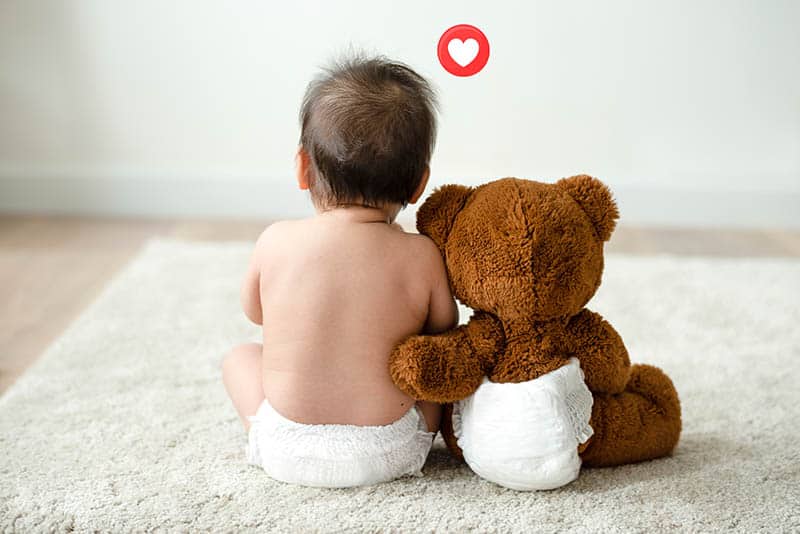
Depending on what sort of fastener is on the side, you may run into different types of the same problem.
If the diaper uses adhesive strips, the adhesive may lose some of its potency (stickiness), leading to a similar issue that the elastic waistband can have – a poorly fitted diaper.
The same goes with the velcro fasteners – the velcro lining can start coming undone and cling to the other side less.
Or, the glue holding the velcro in place can lose enough of its potency, meaning that the velcro simply detaches. That too is a possibility and can render the fastener useless.
And if it’s some sort of hook and hole system, the elastic bit that the hook is attached to might lose elasticity.
This can lead to yet another fastener that you’ll be either unable to attach, or it’ll extend too far and be unable to keep anything tight in the first place.
As you can see, the risks are almost identical to those of the elastic waistband as they both serve a similar purpose.
Should one come undone, the other can hold the fort. But, should they both go, you best be prepared for the floodgates to open.
If anything, you can rely on some good old diaper pins to use as a replacement.
While they may be a bit more uncomfortable for the baby when crawling around, they’ll make sure the diaper stays in place.
EXTRA: Concerning The Cloth Route
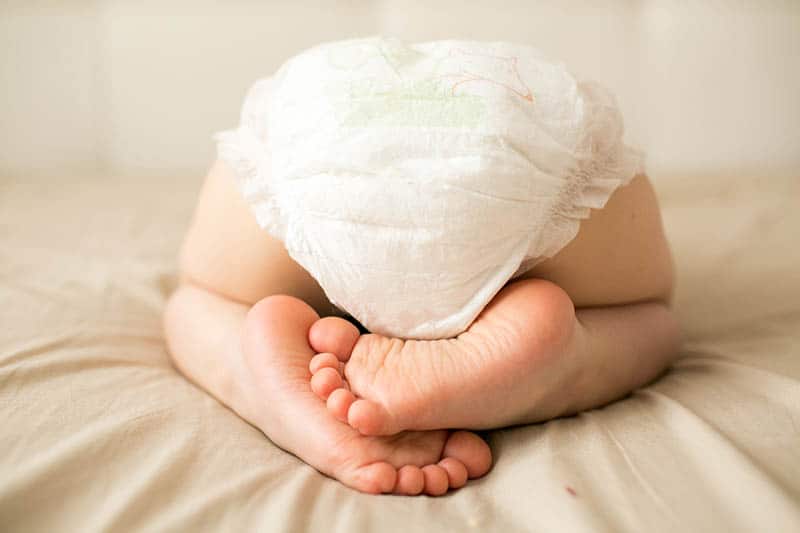
Durability and reusability is one thing where cloth diapers get to shine.
While cloth diapers tend to falter in terms of the time and effort needed to maintain them, they are easy to keep around, won’t cost you as much in the long run, and will not lose their durability for a long time, if ever.
The main issue still remains with the cloth diapers and that’s the increased chances of diaper rash occurring on your little one’s sensitive skin.
Also, do keep in mind that there are some cloth diapers that also opt for rubber waistbands, which as we know, are susceptible to losing their property to time.
Personally, the only reason I’d go for a cloth diaper would be to avoid the risks of having my diapers lose potency since I cannot deal with all the extra effort and time needed to clean them.
That’s time I simply wouldn’t have if I were to consider introducing yet another family member – which might be something for the future, who knows?.
Storing Disposable Diapers
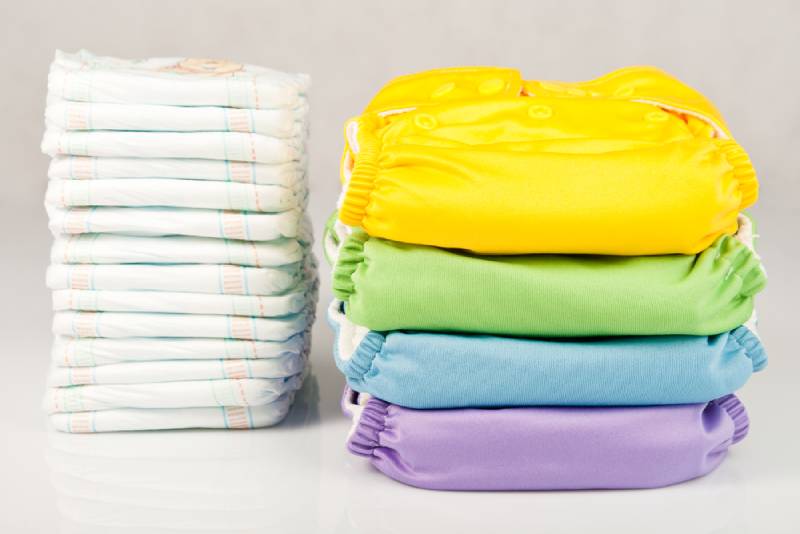
Now, most of these problems listed above can be greatly slowed if the diapers are properly stored and away from any risk factors that may expedite the deterioration process.
RELATED: How Many Diapers Do I Need To Get For My Baby?
Most of these instructions are printed on the packaging, so you don’t have to worry about remembering this by heart.
Don’t open multiple packages. Only keep the one diaper bag that you’re using open until it’s all used up.
This way you won’t risk exposing the other diapers to the factors which make them lose their potency in the first place.
It’s best if they stay in their original packaging, too, as that has already been made as secure as it gets.
You can also store them all in a cardboard box with the packaging still on to provide an extra layer of protection.
Make sure any of your opened containers are as sealed as they can be. Again, for the same reasons as before – a closed diaper bag is a happy diaper bag and you are a happy parent in turn.
And lastly, keep them away from any moisture, heat, or direct sunlight.
The moisture ruins the absorbency of the inner layer and contributes to degrading adhesives, the heat makes the outer layer yellow and the fragrances smell funny as well as affecting the elastic waistband and tabs.
Meanwhile, direct sunlight tends to ruin the coloration as well as affect the elasticity of the tabs and waistbands due to heat transfer.
It’s best to keep them in a dry, dark, and well-ventilated place, much like any other product you’d want to conserve since many share the same enemies.
Final Words
When faced with the question “Do diapers expire or not?”, many people are left wondering and comparing them to other baby products that usually do have expiration dates.
Luckily for all parents, diapers tend to be rather durable, although they do lose some of their potency over time.
Despite all of the problems listed above, they don’t really happen that quickly and you should be safe to use your stockpiled diapers for up to at least the 2 years that many diaper manufacturers claim without much issue.
You can even go as far as to give them out for baby showers without anyone calling you a cheapskate since they’ll still do their solemn duty, especially if you’ve stored them properly.
Anything after that will still work, but it might not provide as much of a benefit as a fresh new pair would.
Whether you keep them for yourself or decide to give them to one of your friends is purely up to you depending on who wants to expand their family roster next.
Sharing is caring after all!
READ NEXT:
- Pampers Cruisers Vs Swaddlers: Which Diaper Is Better?
- Pampers Swaddlers Vs Baby Dry Diapers: Which One Is Better?
- Huggies Vs Pampers: Which Diapers Are The Best?
- Pull Up Diapers: 9 Best Training Pants For Your Toddler
Like this post? Please share or pin it for later. You can also stay in the loop and follow us on Facebook, Instagram and Pinterest.
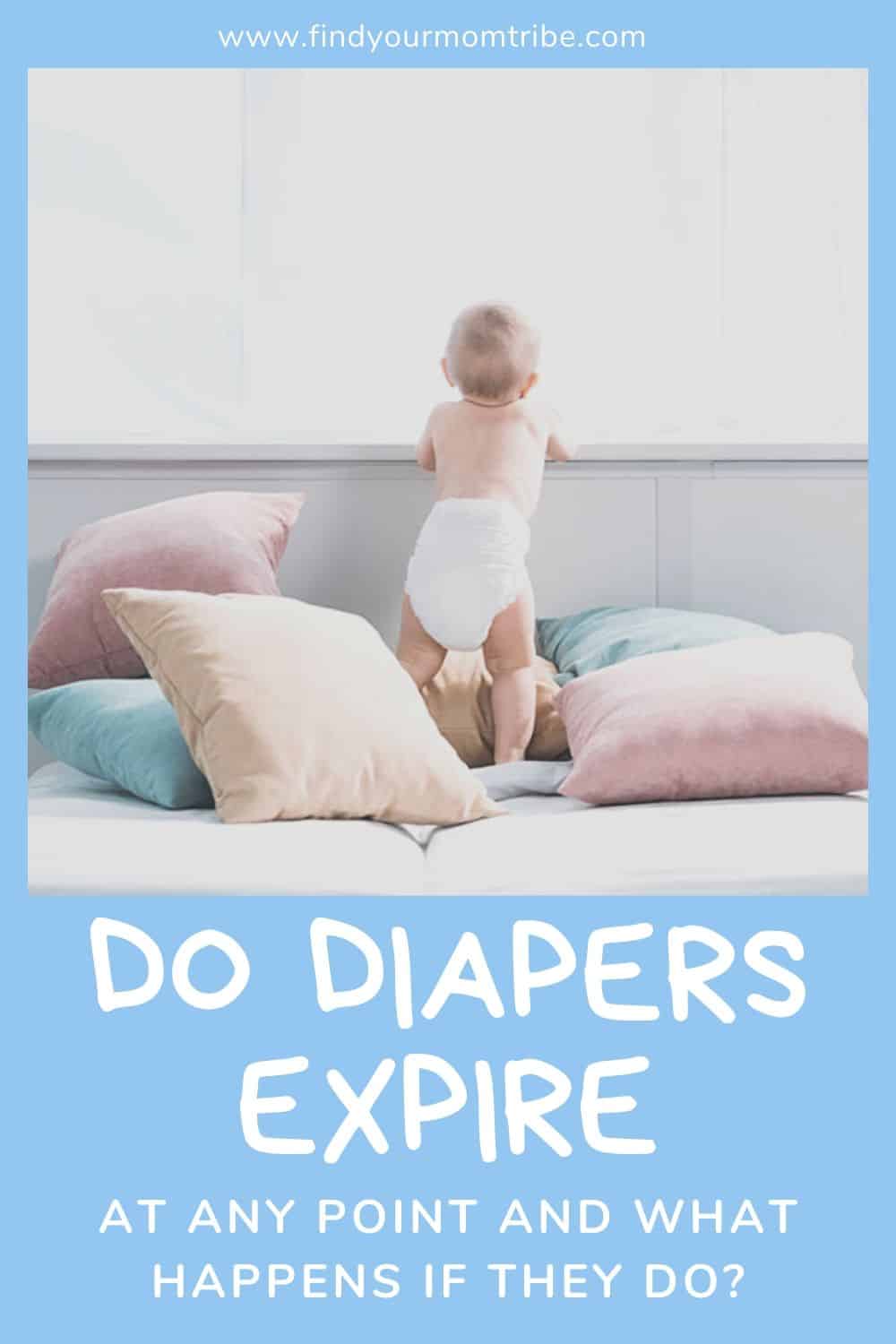
This post contains affiliate links. Please see our full disclosure or more info.

